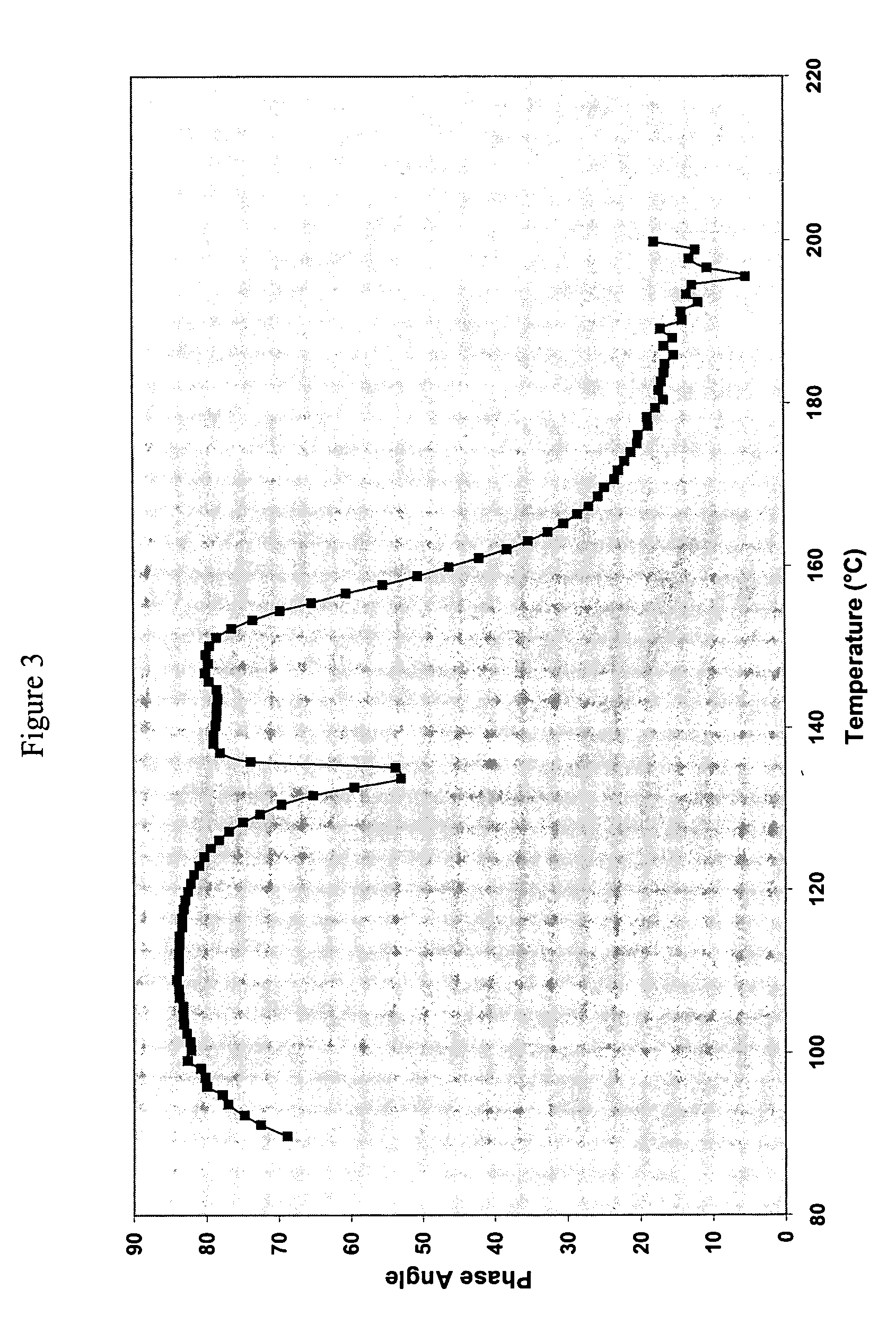Coating matting agent comprising amide condensation product
a technology of amide condensation and coating matting agent, which is applied in the direction of coatings, layered products, transportation and packaging, etc., can solve the problems of poor film properties, unacceptably rough surface, poor appearance, etc., and achieve the effect of reducing gloss, reducing gloss, and reducing gloss
- Summary
- Abstract
- Description
- Claims
- Application Information
AI Technical Summary
Benefits of technology
Problems solved by technology
Method used
Image
Examples
example 1
[0163] 1 mole of Primid XL552 having four a β-hydroxyalkylamide groups per molecule is reacted with 2.5 moles of 1,2,4,5 Benzene-tetracarboxylic acid in the presence of silica in the solid state. In this instance, Primid XL552 contains terminal □-hydroxyalkylamide groups and is obtained as discussed earlier by reacting a diester, substantially the dimethyl ester of adipic acid, with two moles of diethanolamine.
[0164] Accordingly, 40.3 g of Primid XL552 from Rohm&Haas and 80 g of 1,2,4,5 Benzene-tetracarboxylic acid are dissolved in 53.8 g of water. 41 g of (Syloid C807) silica gel having a pore volume of approximately 2 cc / g is added and the mixture is stirred at room temperature for 1 hour. The excess water is removed by heating at 120° C. with application of a vacuum to 300 mmHg, whereupon the temperature is raised to 150° C. and maintained for 4 hours to allow reaction to take place.
[0165] The acid value of the end product is low and did vary compared to the theoretical value o...
example 2
[0168] The commercially available crosslinker Primid XL552 is again employed as a compound containing terminal β-hydroxyalkylamide groups. Primid XL552 is reacted with the anhydride functionality of 1,2,4-benzene-tricarboxylic acid anhydride to produce a substantially monomeric ester-amide containing 8 terminal carboxylic acid groups per molecule and combined with Pural 200 (β-AlO.OH) alumina. The pore volume of Pural 200 alumina is 0.6 cc / g.
[0169] Thus, 29.67 g of Primid XL552 is charged to a reaction vessel containing N,N-dimethylacetamide (DMA) and after dissolution, 71.16 g of benzene-1,2,4 tricarboxylic acid 1,2-anhydride is added under stirring. The amount of DMA is selected so that the final concentration is 25% by weight. The mixture is heated to 90° C. for 1 hour. The acid value is determined to be 452 mgKOH / g compared to the theoretical value of 402 mgKOH / g. The method to determine acid value is expected to have an error of about ±5%.
[0170] The vessel is charged with 168...
example 3
[0174] By an alternative method, a non-linear polymeric ester-amide with terminal carboxylic acid groups and only terminal amide groups is prepared by transesterifying 4.5 moles of dimethyl adipate with 1 mole of trimethylolpropane, followed by subsequent reaction of the remaining ester groups with 6 moles of diethanolamine, followed by further reaction with 12 moles of 1,2,4-benzene tricarboxylic acid anhydride. Thus, 10.3 g of trimethylolpropane is melted at a temperature of 60° C. and charged to a reactor. 60.1 g of dimethyladipate is blended in followed by 0.1 g of a transesterification catalyst.
[0175] Under a nitrogen atmosphere, the temperature is raised to 120° C. and then again gradually to 150° C. and held there for a period of 4 hours. A vacuum of 300 mmHg is applied and held for a further four hours. The distillate has a refractive index of 1.3369, indicating methanol. The reactor is subsequently charged with 48.4 g of diethanolamine and under a nitrogen atmosphere, heat...
PUM
| Property | Measurement | Unit |
|---|---|---|
| Fraction | aaaaa | aaaaa |
| Percent by mass | aaaaa | aaaaa |
| Angle | aaaaa | aaaaa |
Abstract
Description
Claims
Application Information
 Login to View More
Login to View More - R&D
- Intellectual Property
- Life Sciences
- Materials
- Tech Scout
- Unparalleled Data Quality
- Higher Quality Content
- 60% Fewer Hallucinations
Browse by: Latest US Patents, China's latest patents, Technical Efficacy Thesaurus, Application Domain, Technology Topic, Popular Technical Reports.
© 2025 PatSnap. All rights reserved.Legal|Privacy policy|Modern Slavery Act Transparency Statement|Sitemap|About US| Contact US: help@patsnap.com



